Translate This Page
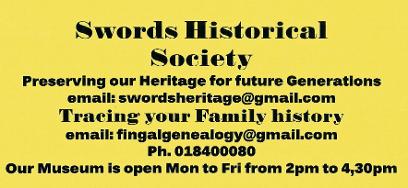
Genealogy
We will do an initial search for your Dublin Roots for €20.00 and let your know what is available to answer your query. See SHOP PAGE
Paddy Savage, Chicago with cousin Joan Savage Geraghty,
at Swords Museum; they traced their relationship with the
help of Fingal Genealogy, Swords.
Henry Savage & Christine McGrane from Swords married in Chicago. Their son
If your ancestors came from the Swords area, they may have attended the Borough School there. The pupils who received premiums on the 9th Nov. 1814 are as follow:
GOOD ANSWERING:
John McGlew, Sandy Leggett, William Hall, Thomas Farrell, Joseph Moran, Thomas Kennedy, Thomas Murray, Charles Fitzpatrick, Mary Lawless, Elizabeth Moran, Julia Quinn, Bridget Rourke, Sarah Johnston, Hannah Reynolds.
ARITHMETIC
John McGlew, John Dolan, Mary Lawless.
FOR GOOD ATTENDANCE
John Wynne, William Toole, Samuel Finlay, John Finlay, Thomas Wheeler. Moran, Joseph Moran, Owen Sheridan, Matthew Nowlan, Rebecca Finlay, Elizabeth Leggett, Elizabeth Reynolds, Margaret Moran, Eleanor Kirby, Elizabeth Leggett, Elizabeth Harpur, Margaret Walsh, Letitia Finlay, Hannah Reynolds.
MONITORS
Richard Blood, James Greene, John McGlew, Richard McCann, Harriet Toole, Elizabeth Brien, Catherine Cuffe, Margaret Plunket.
Should you find a family name in this list, please get in touch for further information.
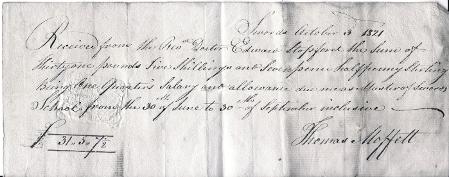
Roll Book, 2nd Class 1927.
Anne Daly, Brigid Walsh, Ellen Troy, Mable Connor, Elizabeth Hand,
Esther Mooney, Lillie McMahon, Mary Courtney, Kathleen Byrne, Patricia Ryan,
Mary Williams, Mina Rourke, Mona McGreevy, Mary Kettle, Kate Wherity, Elizabeth Norton, Frances Brennan, Mary Conheany, Ellen Rothwell, Teresa Smyth,
Bridie Connor, Hannah Leggett.
SURNAMES OF FINGALL
The ancient district of Fine Gall comprises that part of County Dublin bounded by the River Tolka on the south and the River Delvin on the north. The name Fine Gall (the tribe of foreigners) was originally used to describe the invading Danes (also known as Oastmen or Northmen) of the 9th century. Today Fingal ( as it is now known) is taken to mean the area which had invaders or settlers like Danes, Normans, English and even a smattering of Huguenots, all leaving behind a hotch potch of surnames. The Huguenots mentioned were a colony of Dutch weavers imported into the town of Swords by Viceroy Sydney to ‘show an example of industry to the lazy natives’. He repaired part of Swords Castle and reported to Queen Elizabeth l that ‘he had forty families of the Reformed Church of the Low Countries (Holland) planted there’. There was also the ‘pot-walloping’ borough of Swords which, from the time of Elizabeth l encouraged ‘strangers’ to settle there; all testaments to the fact that Fingallians are a very mixed race.
It is accepted by local historians that the Celtic sept of Cianachta which occupied Fingal gives rise to the oldest name in the area, that of O’Casey (Casey) from the eleventh century chief of the territory who took the surname O’Cathasaigh. They have given their name to a place in north Fingal called Dalahasey or in Gaelic ‘Dal Ui Chathasaigh’. In pre-Norman times the southern part of Fingal was occupied by the septs of MacGillamocholmog (Coleman today) and O’Donoghue. Other clan names like O’Kelly, O’Hann (Hand) and various forms of O’Donoghue like Dunphy and Dungan have survived the various laws which were enacted to force the natives to discard their Irish names.
In 1016 the annals tell of ‘Sitric, son of Amlaff and how the Danes of Dublin burned Swords’. This was the last Danish raid on Fingal. Possibly this has left the name McKittrick which is still plentiful in the area to this day. According to Fingallian historians the late Patrick Archer and Paddy O’Neill, other Danish names are Kettle, Harford, Hatch and Hall. Also, Eivers (Ivar was a Danish King of Dublin as was Sitric) and Wilsons. When Hamund MacTorquil was defeated and died in 1171 the Danish power in Fingal ceased to exist leaving the Anglo-Normans to rule the district.
These aristocratic families had names like de La Field (Field today), Barnwall, St. Lawrence, Bath, Plunkett, Finglas, Talbot, Cruise, Russell, Taylor, Hollywood, Nettleville, Seagrave, Blakeney. The first Norman Archbishop of Dublin, John Comyn choose Swords as the site for his summer palace, thus strengthening the Norman influence in the area. This was about the year 1200 and within a hundred years the Anglo-Norman family of Taylor had settled nearby. They built a house in 1403 and occupied the ‘great house’ in Swords until 1915.
When I began to work on the indexation of parish registers in 1988, as a native of the area, I did not expect to find surnames which were unfamiliar to me. To my surprise many unusual names were to be found. As well as those already mentioned, if you happen to have an ancestor named Maypother, Orange, Cappoc, Delahyde or Fynes; they are all still going strong in Fingal! A little pocket of people named Phelmer/Felmer was found almost exclusively in the village of Garristown in West Fingal. The name is not mentioned by MacLysaght for has it survived in the area.
The following is a brief run-down on some of the Fingallian names that have stood the test of time. Some local colour has been added to illustrate that despite their mainly Anglo-Norman ancestry, Fingalllians are thoroughly Irish.
BARNEWELL: This Anglo-Norman family was of much importance in The Pale. The family claims lineage from a Barnewell who was a knight in the Army of William the Conqueror. The Crown rewarded their services in 1462 when Robert Barnewall was given the title Lord Trimblestown. The present Lord has visited the area frequently but lives most of the time in Australia. The lands at Turvey were granted to Christopher Barnewall in the sixteenth century. Christopher had received his education at Douai and was recognised as the head of the Catholic aristocracy in Fingal. Worth visiting is the Barnewall tomb at Lusk Heritage Centre.
KETTLE: MacCoition, son of Ketill, is said to be of Danish origin and means a cauldron, perhaps used in sacrificial rites. The most noted bearer of the name in Fingal was A.J. (Andy) Kettle who was born at Drynan ,Swords in 1833, lived through Famine years and grew up to become involved in land wars, in time earning the name ‘Parnell’s right-hand man’. His son Tom also left his mark on the country by becoming a Barrister, M.P., Orator, Poet, Wit and Soldier. Unfortunately, the latter brought about his death. He joined the British Army and was killed in France in September 1916.
LOWNDES: Louns/Lounds a scarce name of Norman origin and derived from the Belgian city of Louvain, in Fingal it occurs mainly in the Swords area. It has been suggested that the family might have descended from Norman Archbishop Henry de Loundres who once lived at the Castle at Swords. The Bishops were feudal landlords and were likely to have other members of their families in ‘the good jobs’ so the suggestion could be true. The name is found in many old records to do with Swords. They were masons by trade and were involved in local committees and the general affairs of the town.
DE LA FIELD: Known as ‘Field’ today, the Anglo-Norman family who settled in Fingal were originally Lords of a district in Alsace. Hubert de la Field is recorded as a tenant in Buckinghamshire in the reign of William the Conqueror and also a John de la Field 1109. His descendents came to Ireland at the beginning of the thirteenth century having been granted lands in Fingal. The name ‘Fieldstown’ is retained to the present day as is the surname Field, but in times the lands passed to the Barnewall family through the female line. Captain James de la Field supported Silken Thomas and in an attack on Dublin, commanded a detachment which attempted to capture Dublin Castle.
SAVAGE: From the Norman le Sauvage meaning a person of wild and untameable nature. They were one of the families who became more Irish than the Irish when they were introduced to Co. Down in 1177 by Sir John de Courcy. They forfeited their estates for fighting against the English. The family has many branches in the Fingal area, principally in Swords. According to the late Joe Savage of the Swords business family, they descended from a coachman who came to work at one of the local ‘great houses’. He married a local girl and settled in the area
TAYLOR: An occupational surname, the original being the Norman le Tailleur, i.e. the cutter which it derives. It can also mean a cutter or hewer of wood. The family has had a long association with the Swords area of Fingal, having built a mansion house in the town in 1403. The family originated in France and this branch settled in Beverley in Yorkshire, England before coming to Ireland. Always loyal to ‘the old faith’ they were rewarded in 1992 when Francis Taylor of the family was one of the seventeen Irish Martyrs Beatified by Pope John Paul 11. They lived through turbulent times; their house ‘Swords House’ was used as a ‘Mass House’ during penal times, being in the centre of the town. They family died out in 1915 on the death of Col James Fitzeustace Forster who had inherited through the female line.
LAWLESS: As expected, the name signifies an outlaw. According to MacLysaght it was introduced to Ireland after the Anglo-Norman invasion. It was one of the ‘tribes of Kilkenny’ but has now no close association with that city, being much more numerous in North County Dublin. The Lawless Memorial Park in Swords (Fingallians GAA) is called after Frank Lawless who was prominent during 1916 Rising.
STAFFORD: An Anglo-Norman name always thought to been be a Wexford name. It has been suggested that the name was introduced to the Fingal area in 1798 when the Wexford men marched to gain support in Dublin and Meath. Many of them were killed in a fierce battle near Ballyboughal in West Fingal. Those who survived were tended by local women and possibly settled in the area.
WESTON: Still numerous in the area, the name an Anglo-Norman toponymic which is to be found frequently in Irish mediaeval records. ?some were settlers at the Plantation of Ulster (c 1609). The most famous member of the family was 1798 heroine Molly Weston who was born at Oldtown in West Fingal. Riding a white horse and dressed as a man, she fought alongside her three brothers at the battle of Tara.
Bernadette Marks © 2001.

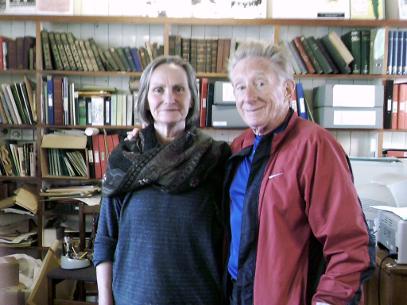
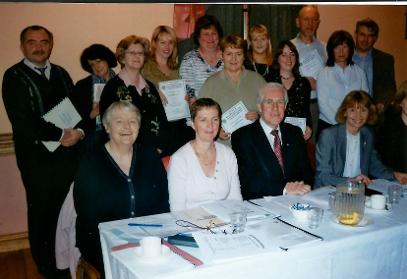
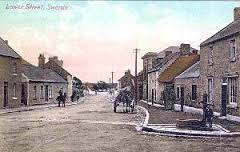
FINGAL GENEALOGY as managed by Swords Historical Society Ltd is part of a nationwide network on Genealogy Centres throughout the entire island of Ireland offering a root tracing service to those with Irish roots.
The Fingal Centre began in 1988 when an idea was mooted by Swords Historical Society to index local genealogical data and in time become part of the Irish Family History Foundation Ltd.
The following pre 1900 Parish Records of Baptisms and Marriage (Roman Catholic) are computerized: (Figures in brackets denote starting dates)-
Balbriggan (1770); Donabate (1760); Garristown (1857); Malahide (1856); Naul/Ballyboughal; (1832); Rolestown/Oldtown (1857); Skerries (1751); Swords (1763); Rush (1785); Lusk (1701); Finglas (1812); Baldoyle/Howth; 1784; Clontarf (1771); Arran Quay/Glasnevin/Drumcondra (1731); Blanchardstown (1771); St. Margaret’s (1856).
Church of Ireland Baptisms, Marriages & Deaths:
Swords (1705); Balrothery (1782); Holmpatrick (Skerries) 1779; Balbriggan (1850); Balscadden/Balrothery (Deaths only) 1888; Lusk (1811); Donabate (1811); Kilsallaghan/Clonmethan/Naul (1806)
Search the records on line at http://www.rootsireland.ie
Other sources available: Vaccination Records for Swords and Donabate 1845-1923;
Dog Licence Records for Swords/Malahide 1923; Fingal Interment Records 1935 to 1089. Roll Books Old Borough School, Swords from 1809; Apprenticeship Records Old Borough School; Roll Books Swords N.S Boys and Girls 1899 to 1965; Names of Fingal Men and Women who fought in 1916 Rising.
Please get in touch if you wish us to search for your ancestor.
Email: fingalgenealogy@gmail.com rootsireland.ie
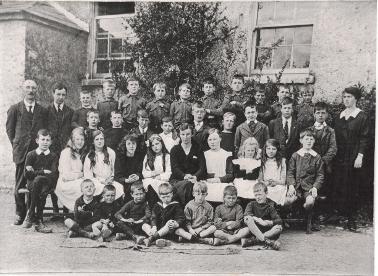
The De la Fields had connections through marriage with other local families, Barnwells and the Taylors of Swords House.
“The highlight of my year was the day I spent with you visiting the Delafield family haunts and Newbridge House.” Kay Delefield, Saipan.
DRAWING THE COAL
by
Bernadette Marks
The Borough School at Swords was opened in 1809 and provided education for the poor of the Borough. There were also many perks that went with being a pupil there, including a supply of free coal to the poor families. Regulations for the school at Swords were approved by the trustees at a meeting held at the Lord Chancellor’s on Thursday 22 November 1810 The rules regarding the supply of coal are as follow:.
COALS: A coal yard will be established and provided with coals to be distributed in the winter at a price not exceeding 30s. per ton, to such poor families as have children at the school and as many others as the establishment can be extended to. Those of the former, who are desirous of applying, are to procure certificates from the vicar or curate as in the former instance, but the quantity they are to receive (which in no case is to exceed two tons in the winter) is to depend on the regularity with which their children, respectively, have attended the school in the preceding half year. For this purpose, the superintendent is to lay before the vicar, or curate, the returns during that period. Other poor inhabitants will obtain certificates for such quantities as the vicar or curate shall think them entitled to from their industry, honesty and sobriety. A person will be appointed to distribute the coals to those who produce such certificates and who are to pay for them at the time they receive them. He is to keep an account of the several persons applying, of the quantities, delivered to each and at what prices.
The setting up of the coal year provided some extra money for those lucky enough to have means of transporting the coals to Swords from Malahide where coal arrived by boat. An old document dated 28th January 1834 illustrates that the scheme was still working very well as the following local people where employed to draw the coals:
James Cruise (8.2 tons); Matthew Lawless (7.4 tons); Peter Early (4.4 tons);
Christopher Quinn (4.4 tons); John Long (4.4 tons); Frederick Sandford (4.4 tons);
James Lawless (3.6 tons); John Early (6.0 tons); William Morgan (4.1 tons); John Richardson (4.4 tons); Michael Casey (4.4 tons); Laurence Keegan (4.4 tons);
Mrs Dalton was the first mid-wife in Swords.